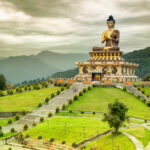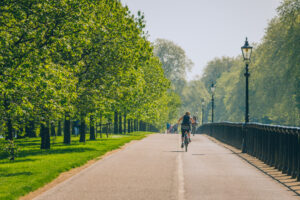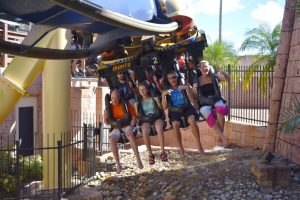Looking for great ideas for your vacation? Utah National Parks are the best way to experience the beauty of the US wilderness. They are located close to each other, making it easy to explore them by car.
The breathtaking scenery includes steep canyons and forested meadows, deserts, and alpine caves. If you are traveling with children or with a large group of friends, pick up 7 passenger cars rental and go on a trip. A spacious vehicle allows you to have a positive experience while exploring Utah’s most beautiful and unique places with comfort.
Among more than 15 national parks in the state, we recommend visiting the following destinations…
Zion National Park

This protected area covers over 590 square kilometers of land. There are many rivers, forming picturesque canyons, but there are also no less impressive desert expanses. The most famous attraction in Zion Park is the 24-kilometer long canyon of the same name.
This place is home to 75 species of mammals, 32 species of reptiles and 289 species of birds. A wide range of exciting leisure activities available for visitors includes hiking, rafting, rock climbing and horseback riding. If you are traveling in a rental car, try to explore the park on your own.
This reserve is well preserved, although the relative proximity of the power plant to it doesn’t contribute to the improvement of the ecological situation in the region.
Capitol Reef National Park

This famous national park was created with the goal of protecting the vast area of desert lands located in the south-central part of Utah. The Fremont River flows through it, forming deep gorges and canyons with snow-white rocks on its way.
As a road traveler, you have several options to explore Capitol Reef:
- by a rental car;
- go on an exciting hiking trip;
- order horseback riding tour to the park.
The main attraction of this nature reserve is the still-operating Mormon settler farm. The territory of the Capitol Reef Park is a home for mammals, birds, reptiles and amphibians. However, the location of coal-fired power plants in the region poses a threat of air pollution and harms the flora and fauna of the park.
Canyonlands National Park

Canyonlands is a desert, ragged peaks of cliffs, picturesque rock formations and gorges, created over the centuries by the main architects of the park – the Colorado and Green Rivers. It’s a land of stunning natural landscapes, dizzying deep canyons, impressive steep cliffs and towering red natural spiers.
Similarly to Capitol Reef, this place impresses with its wildlife. Baribal, fox, lynx, bald eagle and striped hawk are the main representatives of the Canyonlands. These protected areas are very popular with tourists who prefer to travel by jeeps. So, you can rent a car with a high ground clearance to explore the most secret places in the park.
Canyonlands is home to extensive freshwater sources that provide life-giving moisture to over 30 million people. Oil drilling and tar sands mining outside the Canyonlands is damaging the environment and significantly altering the landscape of this unique area.
Bryce-Canyon National Park

The territory of this nature reserve impresses with unique natural amphitheaters formed by hoodoos – tall bizarre stone columns. Some of these rocky formations reach 2,400-2,700 meters above sea level. According to scientists, these erosional pillars are ordinary mountain peaks that have received such strange shapes after standing for millions of years, open to all winds and subject to the influence of other atmospheric phenomena.
Although most of the park’s expanses are lifeless dry desert lands, there are still vast forests on its territory. 400 species of plants grow here, including Colorado pine, juniper and yellow pine.
Some of the more prominent fauna in Bryce Canyon Park include baribals, North American porcupines and black-tailed deer. There are also rare species of animals, including the prairie dog, the California condor, and the southwestern willow flycatcher.
Visitors to the park can hike through protected areas or take a sightseeing tour in a rental car. You can also go skiing there, and due to its remote location from major cities, this is one of the greatest destinations for observing the starry sky.
Arches National Park

It’s the most iconic nature getaway in Utah and a symbol of the state. Its name clearly underlines the characteristic feature of this protected area, which is home to more than 2 thousands natural sandstone arches.
Natural stone arches and fantastic rock formations, as if created by the hands of skilled sculptors. Very hot dry summers and cold winters are the climatic characteristics of Arches National Park. There are many antelope ground squirrels and cougars on its territory. The plants most characteristic of the flora of Arches Park include yucca, prickly pear cactus and Indian rice. There’s no public transport in the park, so you can get to Arches by a rental car only. The city closest to the park is Moab.



 Best Places to Visit in India
Best Places to Visit in India




